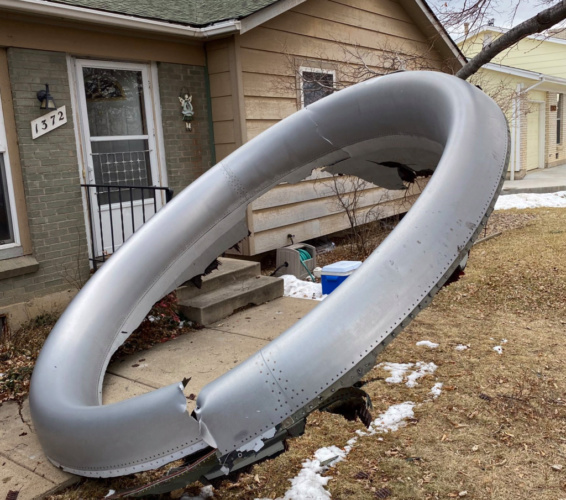https://twitter.com/ChadSchnell/status/1363259614133776386
On Saturday, February 20th, United flight F328 from Denver to Honolulu had to return to Denver International Airport for an emergency landing following a dramatic engine failure. Alongside flames from inside the engine, the inlet and cowling of the Pratt & Whitney PW4077 on the right wing also detached, scattering debris around the Broomfield area to the west of the airport. None of the 229 passengers or 10 crewmembers were injured.
Boeing promises sustainable fuels fleet by 2030

According to a preliminary investigation from the US’s National Transportation Safety Board (NTSB), most of the damage was confined to the number two engine, with minor damage sustained to the aircraft itself. Two engine fan blades were fractured, one near the root and an adjacent blade in about mid-span. A portion of one blade was imbedded in the containment ring, while the remainder of the fan blades exhibited damage to their tips and leading edges.
https://twitter.com/united/status/1363268091078139904
NTSB investigators will continue to examine the engine and aircraft, as well as photographs and video taken by passengers aboard the flight. The cockpit voice recorder and flight data recorder were also transported to the NTSB laboratory in Washington for analysis. A statement from the Federal Aviation Administration (FAA) said the agency was recommending “stepped up inspections” of all Boeing 777s flying with certain types of Pratt & Whitney PW 4000 engines.
“We reviewed all available safety data following yesterday’s incident,” said FAA administrator, Steve Dickson. “Based on the initial information, we concluded that the inspection interval should be stepped up for the hollow fan blades that are unique to this model of engine, used solely on Boeing 777 airplanes. This will likely mean that some airplanes will be removed from service.”
https://twitter.com/breakingavnews/status/1363793475947356161
United Airlines said it was temporarily grounding all 24 of its Boeing 777s on active duty, with the Japan Civil Aviation Bureau also taking action on its affected aircraft, and Boeing itself recommending suspension of flights on the 69 in-service and 59 in-storage 777s powered by Pratt & Whitney 4000-112 engines.
“Boeing supports the decision yesterday by the Japan Civil Aviation Bureau, and the FAA’s action today to suspend operations of 777 aircraft powered by Pratt & Whitney 4000-112 engines,” the company said in a statement.
“We are working with these regulators as they take actions while these planes are on the ground and further inspections are conducted by Pratt & Whitney.”





Nanogenerator consumes CO2 to generate electricity
Whoopee, they've solved how to keep a light on but not a lot else.